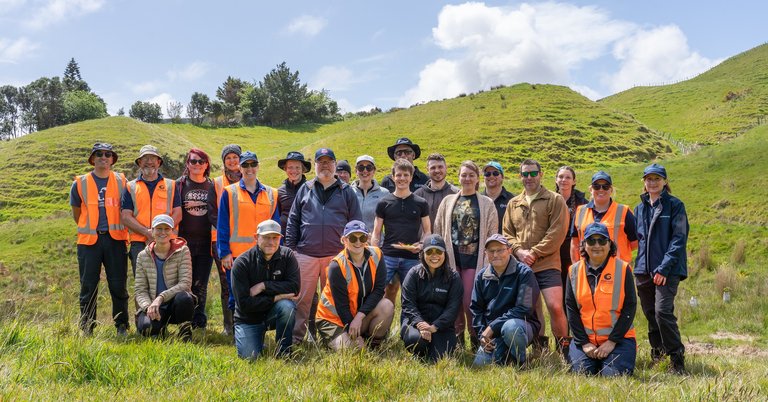


Volunteers from the Ministry for the Environment helped to plant 400 native plant species and test the water quality of the Waihora stream at the back of Waitangirua last month.
The Ministry funds several Council programmes within our Harbour and Resource Recovery team, so it was a great opportunity for Ministry staff to see one of their projects in action and contribute to the planting efforts.
This work is part of the wider Te Awarua-o-Porirua Streamside Planting Programme, which is a collaboration between Porirua City Council and Ngāti Toa to regenerate the waterways around Porirua.
The Waihora stream was only retired from grazing for cattle a few months ago, and since then more than 15,000 plants have been put in the ground.
“It’s a great example of the programme in action,” says Council Programme Manager Brian Thomas.
“The people there on the day could clearly see the challenges of this site and, for example, why we needed to use a helicopter to deliver plants to the upper catchment.”
As well as planting, the site visit was also used to test the water quality of the Waihora stream, which runs through the planting area.
The Waihora stream and its headwaters sit in the upper catchment of the Porirua stream and water testing at the site showed raised levels of phosphate and nitrates – because of the recent grazing and human activity in the area.
Council Manager Harbour and Resource Recovery Nigel Clarke says another way of testing the health of the stream is by identifying what critters are living in it.
“The sites that have only recently been retired from grazing have lots of snails. Snails are robust creatures that tolerate very poor-quality water.
“In the locations where cattle have been absent a while, the presence of mayflies and caddis flies show the water quality is slowly improving.”
Mr Clarke says the ongoing planting programme will help to improve environmental outcomes for the stream and harbours by filtering sediments and pollutants before they reach the streams.
9 Nov 2022